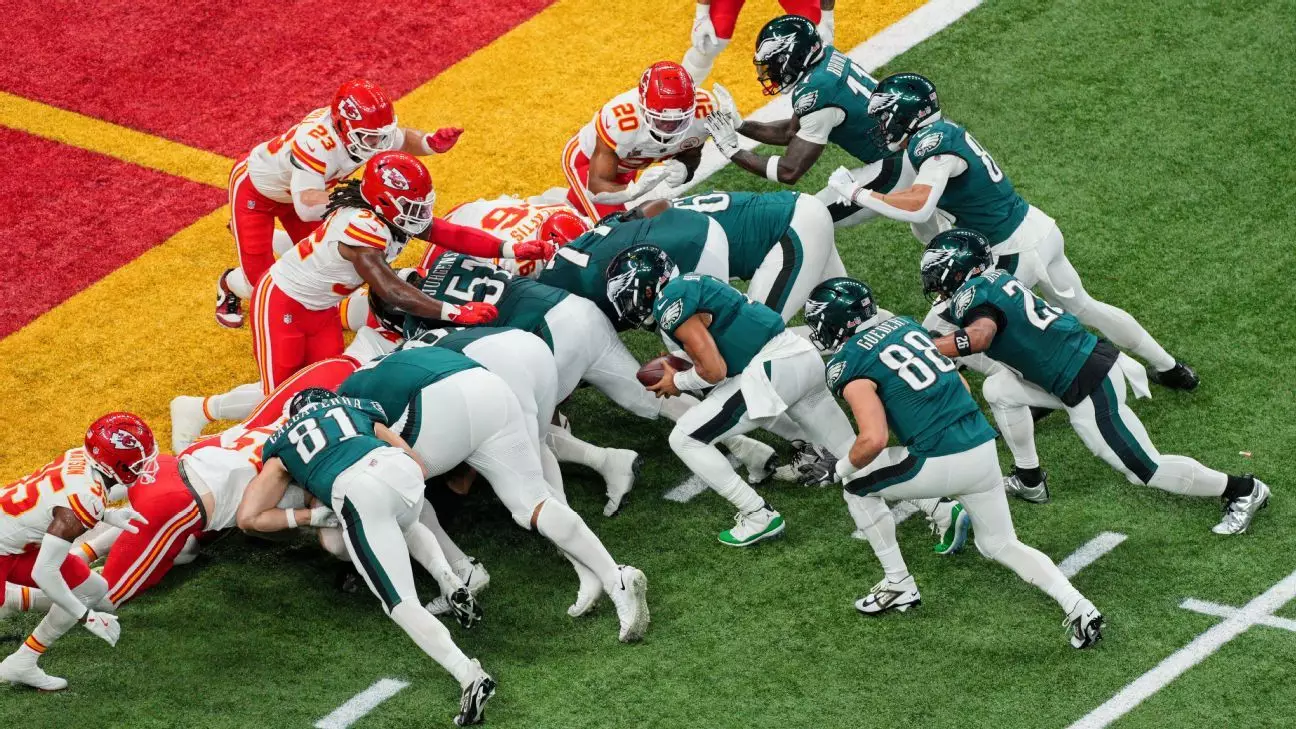The National Football League (NFL) has always been a bastion of strategic evolution, drawing attention not just for its games but for the rules governing them. Recently, a proposal surfaced that could significantly alter the fabric of the game—specifically targeting the controversial “tush push” quarterback sneak. Troy Vincent, the NFL’s executive vice president of football operations, disclosed this rule change consideration to reporters amid the scouting combine festivities. Although he refrained from naming the team behind the proposal, he did indicate that discussions are set to unfold in the coming weeks. Consequently, we find ourselves at a crossroads, questioning if a well-favored play will face scrutiny and, potentially, elimination.
This proposal is set against a backdrop of ongoing discussions among NFL officials and the competition committee, highlighting how collective decision-making shapes the direction of the league. The fate of the “tush push” will largely rest in the hands of the league owners, who will cast their votes next month in Palm Beach, Florida. Achieving a majority requires the support of 24 out of 32 owners, emphasizing the imperative of stakeholder alignment.
The “tush push” maneuver, primarily executed by the Philadelphia Eagles and Buffalo Bills, consists of teammates lining up behind the quarterback to drive him forward in a desperate attempt to gain essential yards. Over the past three seasons, these teams have executed this play 163 times, dominating the league’s metrics. Furthermore, they’ve achieved astounding success rates—87% of the time they convert these attempts into touchdowns or first downs, significantly higher than the rest of the league’s 71%.
The “tush push,” often referred to in Philadelphia as the “Brotherly Shove,” comes inherently with both strategic brilliance and physical execution. In fact, its notoriety escalated during Super Bowl LIX when Jalen Hurts led the Eagles to a pivotal touchdown using this play. Still, while it showcases the Eagles’ mastery, it also raises questions regarding player safety and the competitive balance within the NFL.
NFL decisions often surface from a delicate dance between player safety and competitive integrity. Vincent highlighted past conversations that juxtaposed the “hip drop” tackle with the “tush push,” signifying ongoing deliberations about player welfare on the field. Nevertheless, while the Eagles have exhibited impressive execution, the predominant message is that other teams struggle to replicate that same level of effectiveness. Herein lies the crux of the debate—whether the play embodies a legitimate football strategy or simply showcases a team’s unique prowess.
Notably, the inquiry is not merely procedural but deeply rooted in tactical complexities intrinsic to the sport. The NFL, as a collective, must weigh the excitement built around innovative plays against the implications they hold for player health and the evolutionary nature of competitive advantage.
Should the proposal advance and the “tush push” ultimately be banned, it is expected to echo throughout the league in numerous ways. Coaches will be forced to rethink their offensive strategies, and players will need to adapt to a landscape that increasingly favors offensive versatility over brute force tactics. Defensive units, too, will have to recalibrate their approaches, potentially leading to broader modifications across various schemes.
Moreover, proposals often initiate a ripple effect; they lead to subsequent discussions and adaptations that could extend beyond just one play or tactic. Such a change might also influence how teams strategize around short-yardage situations, possibly shifting towards more traditional methods or entirely novel approaches.
As discussions ensue and the vote looms, the future of the “tush push” remains uncertain. Rooted in intricacies of strategy, safety considerations, and competitive balance, the ultimate decision will leave an indelible mark on the game. In the NFL’s relentless pursuit to balance tradition with innovation, the question remains: will the league embrace this play as an iconic strategy or dismiss it as a mere anomaly? The next month will unveil the choices that the NFL’s owners believe define the sport’s essence moving forward.


Leave a Reply